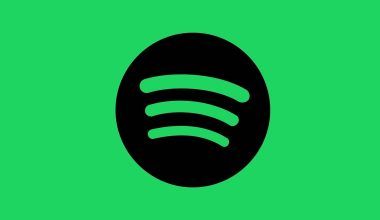Have you ever dreamed of sharing your music with the world but felt held back because you don’t have a record label? Well, here’s some fantastic news: You don’t need one. With today’s technology, it’s easier than ever to upload your music on all streaming platforms without a label. Whether you’re an independent artist, a band, or a bedroom producer, you have the tools to make your music heard by a global audience. Let’s dive into how you can Upload your music on all streaming platforms without a label.
Why Streaming Platforms Are Essential for Independent Artists
Streaming platforms like Spotify, Apple Music, and Tidal have changed the music industry forever. Gone are the days when you needed a record label to distribute your music. Now, you can reach millions of listeners worldwide, build a loyal fanbase, and even earn money from your streams.
But why is it so important to get your music on these platforms? First, it’s where most people discover new music. Second, having your music on streaming platforms increases your credibility as an artist. Finally, streaming revenue can provide a steady income over time, especially as your fanbase grows.
Understanding Music Distribution
Before we get into the how-to, let’s talk about music distribution. Distribution is simply the process of getting your music from your computer to streaming platforms. In the past, this was something only labels could handle. Today, you can work with digital distribution companies that specialize in helping independent artists upload their music everywhere.
Some of the most popular music distribution platforms include:
- DeliverMyTune
- TuneCore
- CD Baby
- Amuse
- Ditto Music
Each platform has its own pricing and features, so it’s essential to choose one that fits your needs.
Preparing Your Music for Upload
Uploading your music isn’t as simple as dragging and dropping files. You need to ensure your tracks are professional and meet industry standards. Here’s what you need to do:
1. Record and Mix Your Music
Make sure your tracks are recorded and mixed professionally. If you don’t have access to a studio, there are plenty of affordable options for home recording equipment. The better your music sounds, the more likely people will listen to it.
2. Master Your Tracks
Mastering is the final step in the production process. It ensures your music sounds great on all devices and platforms. If you’re new to mastering, you can hire a professional or use online mastering services like LANDR.
3. Create High-Quality Files
Most streaming platforms require files to be in WAV format with a resolution of 16-bit/44.1 kHz. Double-check your files to ensure they meet these requirements.
Choosing the Right Distributor
Now that your music is ready, it’s time to pick a distributor. Here are some questions to consider when choosing one:
- What’s the cost? Some distributors charge a yearly fee, while others take a percentage of your earnings.
- Which platforms do they distribute to? Ensure the distributor covers all major streaming services.
- Do they offer additional services? Some distributors provide tools for marketing, analytics, and even royalty splits.
Let’s take a closer look at a few popular options:
- DeliverMyTune: Known for its simplicity and affordability. You pay an annual fee and can upload unlimited music.
- TuneCore: Offers detailed reports and analytics but charges per release.
- Amuse: A free option with a premium tier for faster releases and advanced features.
Uploading Your Music
Once you’ve chosen a distributor, it’s time to upload your music. Here’s a step-by-step guide:
- Sign Up: Create an account with your chosen distributor.
- Upload Your Files: Add your music, artwork, and metadata.
- Choose Your Platforms: Select which streaming services you want your music on.
- Set a Release Date: Pick a date for your music to go live.
- Submit: Review everything and hit submit.
Most distributors will take a few days to a couple of weeks to get your music on all platforms.
Promoting Your Music
Getting your music on streaming platforms is just the first step. To succeed as an independent artist, you need to promote your music. Here are some effective strategies:
Platforms like Instagram, TikTok, and Twitter are powerful tools for reaching new fans. Share snippets of your music, behind-the-scenes content, and interact with your audience.
2. Build a Website
A professional website can serve as a hub for your music, merch, and updates. It also makes you look more credible.
3. Pitch to Playlists
Playlists can significantly boost your streams. Many distributors offer tools to pitch your music to curated playlists.
4. Collaborate with Other Artists
Collaborations can introduce your music to new audiences. Reach out to artists with similar styles and propose working together.
Tracking Your Progress
After your music goes live, it’s essential to track its performance. Most distributors provide analytics that shows your streams, revenue, and audience demographics. Use this data to refine your promotion strategies and plan future releases.
Staying Consistent
Success in the music industry doesn’t happen overnight. To build a sustainable career, you need to stay consistent. Keep creating, releasing, and promoting your music. Over time, your hard work will pay off.
Final Thoughts
Uploading your music on all streaming platforms without a label is not only possible but also empowering. It gives you full control over your career and allows you to connect directly with your audience. By following the steps outlined in this guide, you can share your music with the world and take your first steps toward becoming a successful independent artist.
Now it’s your turn. Start preparing your music, choose a distributor, and upload your tracks. The world is waiting to hear your sound. Good luck!
Related Articles:
For further reading, explore these related articles:
- How to Release Music to Spotify: A Step-by-Step Guide
- How Much Do Artists Make Per Stream on Spotify?
For additional resources on music marketing and distribution, visit DMT Records Private Limited.






